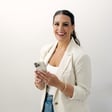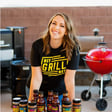
Episode 193 - How to Write a Marketing Hook
We've been taking a hard look these past few months at how we share content, especially across social media. Basically, we weren't thrilled with the amount of engagement and started to experiment with a few different strategies to increase engagement. And some of those experiments would make for an interesting, if not comical, podcast episode, at some point.
Today's episode, however, focuses on one simple way that we were able to get more engagement on social media while also increasing the amount of referral traffic from our social channels to our website. This episode is all about writing effective hooks. It's one of those simple tweaks that can make a big difference.
As always, links and resources can be found in the show notes. Check ‘em out at https://daveyandkrista.com/write-marketing-hook And if you enjoyed this episode, please consider leaving a review over at Apple Podcasts.
















